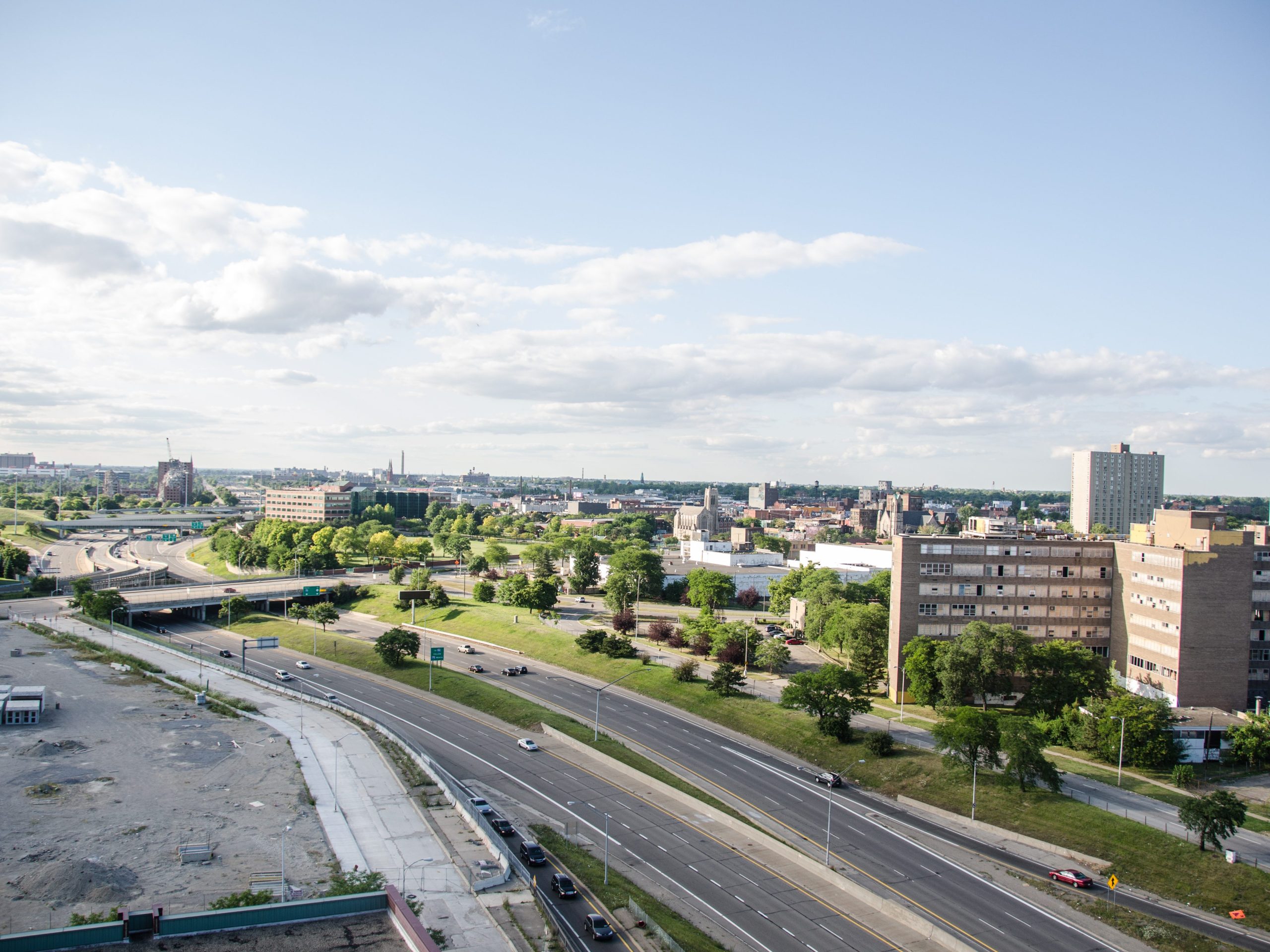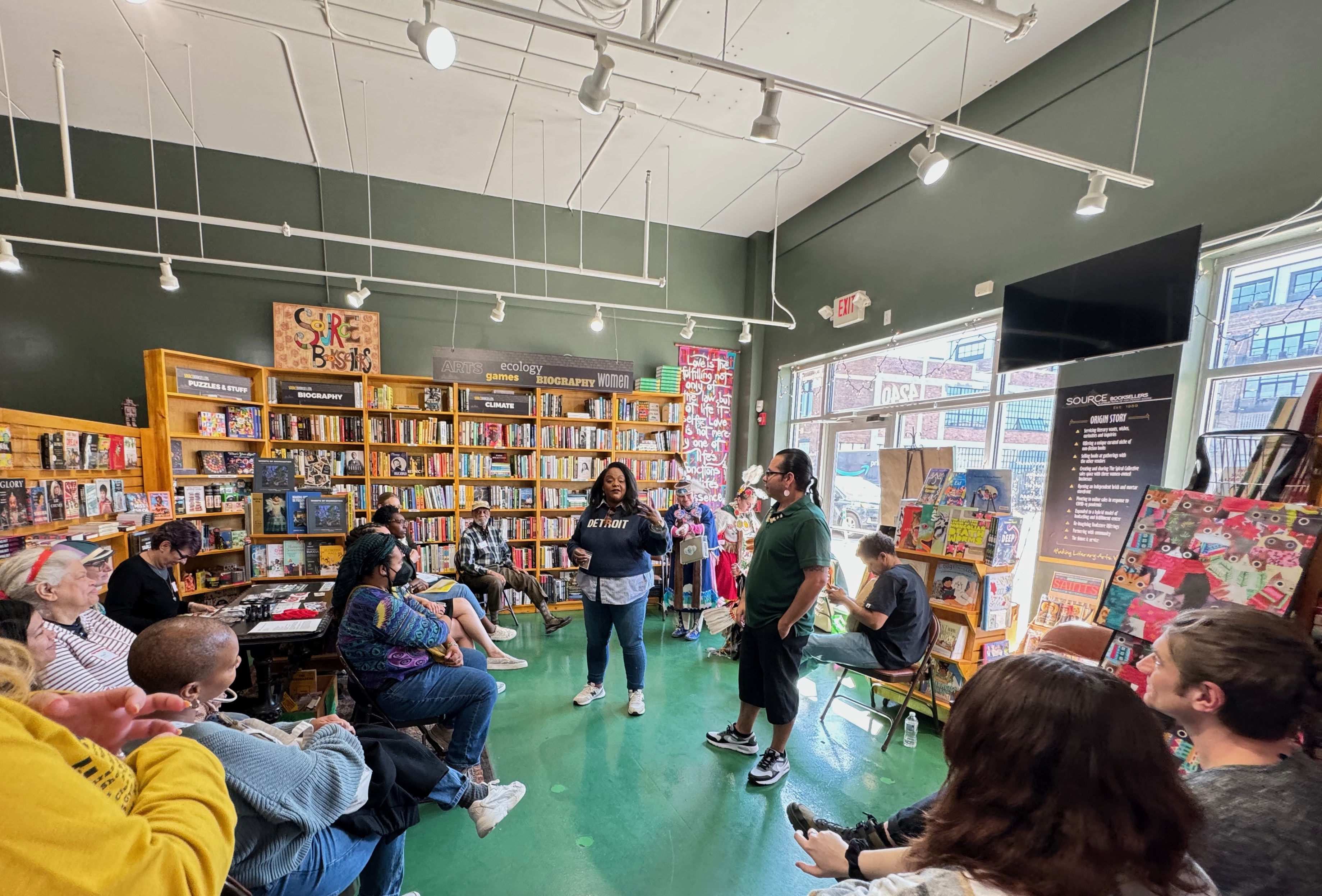The City of Detroit has completed 18 neighborhood framework plans so far. Few have been as well received as the one for Cody Rouge.
The plans are a list of actionable ideas to shape or improve places in line with residents’ priorities. But the outcomes haven’t always pleased residents.
Cody Rouge’s plan, completed in 2022, recently won an award from the American Planning Association and got high marks from people involved. We dig into what made it successful.
It’s been two weeks since we’ve been in your inbox, and The Dirt is jam packed. We’ve got updates on the I-375 revamp, Brodhead Armory redevelopment and Joe Louis Greenway. Also, an outside auditor is going to take a look at Detroit property assessments to determine if they’re accurate — to the delight of tax justice advocates.
As always, thanks for reading.
Dig This
Cody Rouge’s neighborhood plan is a model for others to follow
by Aaron Mondry

Cody Rouge, one of Detroit’s largest neighborhoods at more than five square miles, has unique features that helped make its neighborhood planning process successful: buy-in from residents, participation from young people and practical goals.
Future neighborhood plans may want to borrow from these features of the Cody Rouge plan where they can.
The Dirt

Initial reviews for 375 changes are in: The Michigan Department of Transportation (MDOT) has started releasing updates to its plan to turn I-375 into a surface-level street following public outcry last year about the number of lanes and other issues. MDOT announced some changes at a public meeting on June 25 that included a reduction in lanes, better connections to Mack Avenue and the Brush Park neighborhood, and shorter crosswalks along Gratiot Avenue to improve safety for pedestrians. But residents, neighborhood organizations and the ReThink I-375 Community Coalition, an activist group asking for changes to the project, still have questions (paywalled). Business owners worry they’ll get hit hard during the multiyear construction process. The current timeline calls for construction to begin in late 2025 and finish around three years later. The project will also create more than 30 acres of developable land, and advocacy groups want the city and MDOT to detail how they’ll use it. MDOT Senior Project Manager Jon Loree said major construction won’t begin until 2026, allowing plenty of time to mitigate potential revenue losses for businesses and to plan for the excess land. (Detroit Free Press, Outlier Media, Amy Senese/Detroit Documenters, Crain’s Detroit Business)
Third time’s a charm: Detroit City Council expressed its displeasure at the lack of progress on the $45 million Brodhead Armory redevelopment — before approving an extension of the timeline by another year. The Parade Co. hopes to rehab the historic structure on Jefferson Avenue into its new headquarters, but hasn’t been able to raise enough money to begin construction. This was the third extension City Council granted the nonprofit. The 2021 deal stipulated The Parade Co. had to close on the $300,000 purchase by September 2022. The latest closing deadline is June 30, 2025. Parade Co. President and CEO Tony Michaels said the organization has raised only $14.5 million. Council President Mary Sheffield said she’s requiring quarterly fundraising updates from the nonprofit. (Outlier, Detroit News, Freep)
Assessing assessments: City Council approved a contract with an independent auditor to determine whether Detroit homeowners are being fairly assessed on their property taxes. An ordinance passed in November required the city to hire an evaluator. It’s widely accepted that property taxes are more in line with market reality following a citywide reassessment in 2014. But the advocacy group The Coalition for Property Tax Justice, citing a recent study from the University of Chicago, says the city is still overassessing homes with values from $3,200-$34,000. City Council also approved a contract allowing residents to pay their property taxes in cash at several popular retail chains and gave low-income residents an extension to apply for a property tax exemption on 2023 taxes until Nov. 1 this year. If you think you might be paying more than you should in property taxes, use Regrid’s Detroit Assessment Gauge. (Metro Times, Michigan Public, Outlier, BridgeDetroit, Regrid)
Rapid-fire demolition: The city issued an emergency demolition order late last month for a building attached to the Dabls Mbad African Bead Museum. The building came to the city’s attention after owner Olayami Dabls launched a fundraiser that looked to raise $399,000 for its renovation. The head of the city’s buildings department, David Bell, said in a statement that the structure was “in a state of significant collapse and must be taken down immediately.” The five-building museum complex at the corner of Grand River Avenue and West Grand Boulevard consists of a gallery, bead shop, clothing store, storage for the museum’s large collection and office space. Dabls hoped to turn the vacant structure into a full-scale museum, but the roof collapsed in 2022. He still hopes to rebuild on the vacant land. (BridgeDetroit, Freep)
Development News Quick-Hitters
The U.S. Department of Transportation provided a $20.7 million grant for the Joe Louis Greenway. The city will use the money to create two paths in Southwest Detroit’s Springwells neighborhood and just north of the Dequindre Cut to connect the existing path to the Iron Belle Trail. (Detroit News)
The city will spend $6.1 million (paywalled) to keep 389 units at eight low-income apartment buildings affordable for another 15-25 years. The spending will resolve a matter raised by U.S. Department of Housing and Urban Development, which said money the city spent on the Motor City Match program didn’t meet federal guidelines. (Crain’s, Metro Times)
Detroit has started beautifying five alleys (paywalled) with new surfacing, landscaping, amenities and murals from local artists. The Arts Alleys project will eventually cover nine alleys and cost $5.4 million. (Detroit News)
Opportunities
Get up to $25K in homebuying assistance
Detroit launched another round of funding for its Down Payment Assistance Program. The well-received program provides up to $25,000 in grants for eligible households to put towards down payments, closing costs and other barriers to homeownership.
City officials said the 434 recipients in the first phase — 94% of the whom were African American — got on average $24,582.
Applicants must make less than certain income thresholds, have lived in Detroit for at least a year, or have lost their home to property tax foreclosure between 2010 and 2016, among several other requirements.
Potential homebuyers must be pre-approved for a mortgage and take a homebuyer education course. They should also inform their Realtor about the program. For more information, go to DetroitDPA.org.
One Good Building
The unsung gem of Rouge Park

Arguably one of the city’s best-kept secrets, Brennan Pool — actually two pools — is a gem that will likely get a higher profile once a new recreation center opens in a couple years.
Prolific Detroit architect Albert Kahn designed the Brennan Pool House, which has locker rooms and a space for indoor programming. The long, Tudor Revival facility with its classic wood-trimmed window bays fits in with the many similarly styled buildings that dot Rouge Park. It opened in 1929 and was the site of Olympic trials in 1956 and 1960. The Motor City was the United States’ nominee to host the Olympics an incredible four times between 1960 and 1972.
By 2011, the city’s inability to pay its bills led to the closure of the facility. It reopened three years later, just before the city emerged from bankruptcy. The Lear Corp. helped bankroll a $5.5 million renovation, restoring the pools and overhauling the locker rooms.
Now, another corporate benefactor has stepped up with a cash infusion. Detroit Pistons owner and prison phone company investor Tom Gores pledged $20 million to build a new 25,000-square-foot city recreation center in Rouge Park.
Some community groups object to the location of the expansion, which would require removing a stand of mature oak trees. A city official says construction is expected to start by the end of the year and be wrapped up by early 2026. The project is being managed by the Pistons in collaboration with the city.



